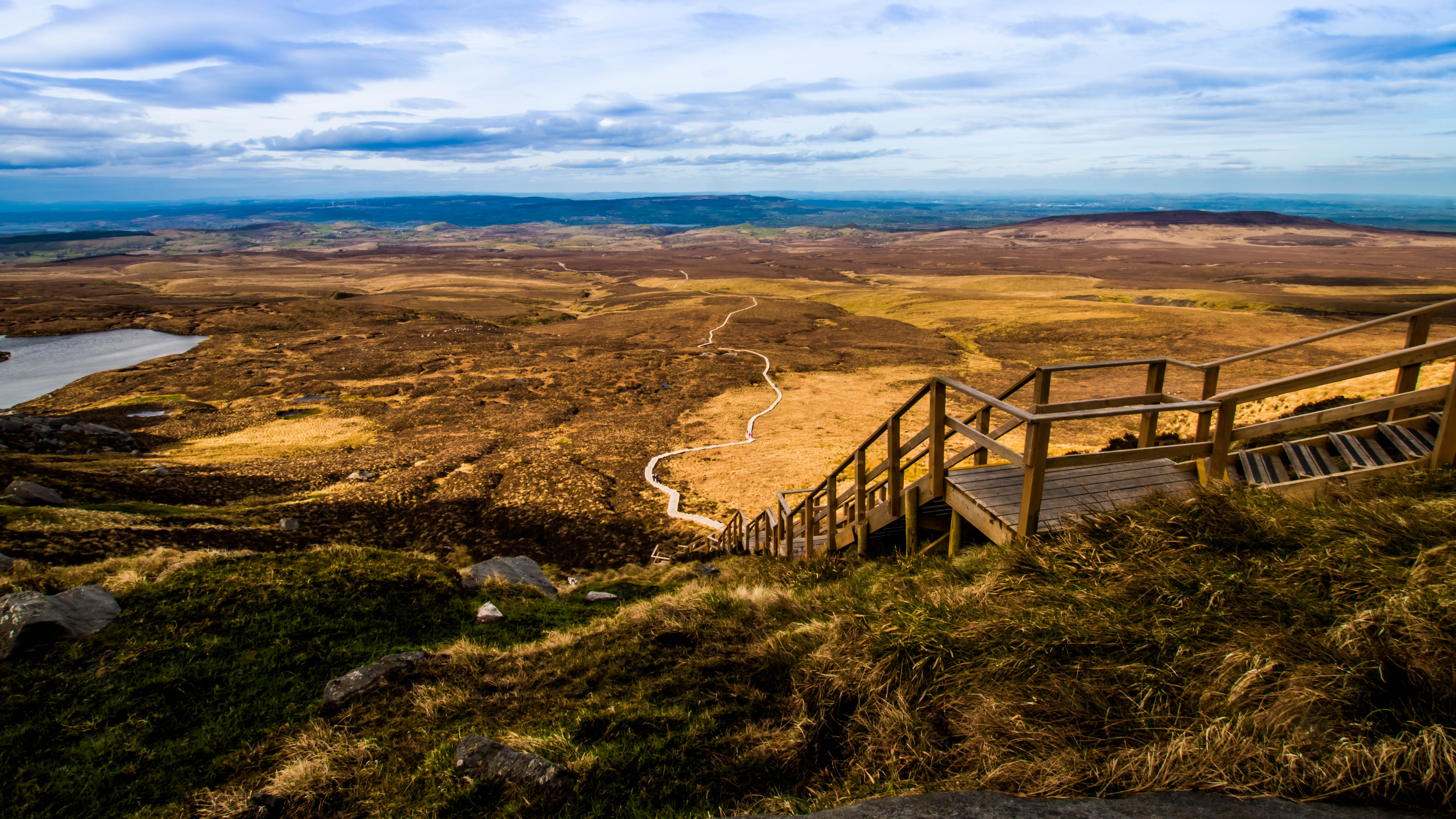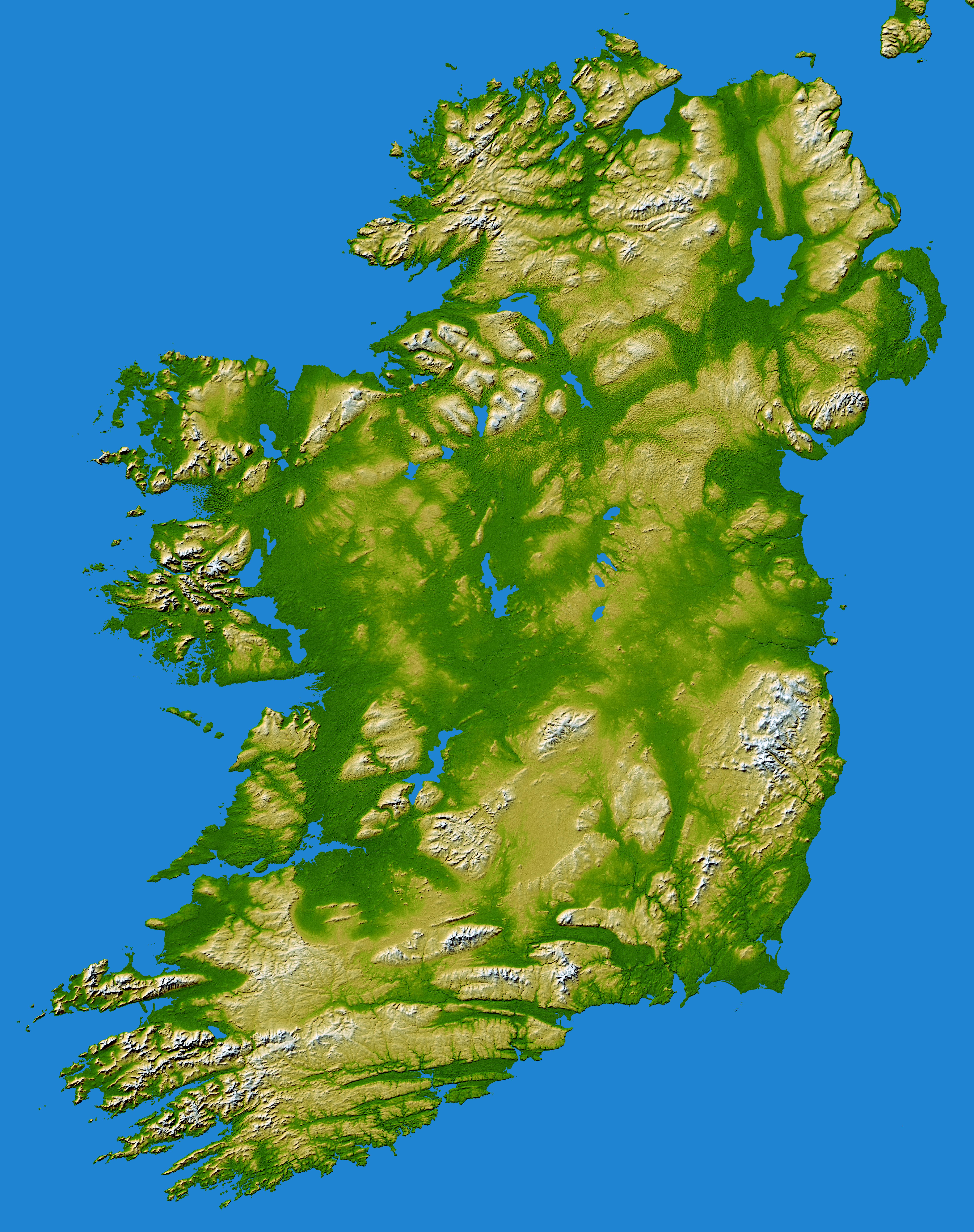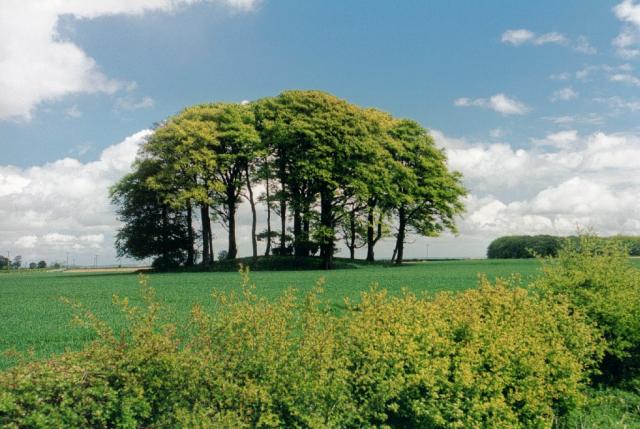|
Cuilcagh
Cuilcagh () is a mountain on the border between County Fermanagh (in Northern Ireland) and County Cavan (in the Republic of Ireland). With a height of it is the highest point in both counties. It is also the 170th highest peak on the island of Ireland, and Ireland's only cross-border county top. Water from the southern slope flows underground until it emerges some miles away in the Shannon Pot, the traditional source of the River Shannon. The area is sometimes referred to as the Cuilcagh Mountains. Naming The name Cuilcagh comes from the Irish ''Cuilceach'', which has been translated as "chalky". However, the mountain is mainly sandstone and shale, covered with bog and heather. The cliff-edged summit surface of the mountain is formed from the hard-wearing Lackagh Sandstone which itself overlies the Briscloonagh Sandstone. "It is possible that the name refers to the limestone rock on the lower northern flanks, namely the Glencar and Dartry Limestone formations. Here a number ... [...More Info...] [...Related Items...] OR: [Wikipedia] [Google] [Baidu] |
Marble Arch Caves
The Marble Arch Caves are a series of natural limestone caves located near the village of Florencecourt in County Fermanagh, Northern Ireland. The caves are named after the nearby Marble Arch, a natural limestone arch at the upstream end of Cladagh Glen under which the Cladagh River flows. The caves are formed from three rivers draining off the northern slopes of Cuilcagh mountain, which combine underground to form the Cladagh. On the surface, the river emerges from the largest karst resurgence in Ireland, and one of the largest in the United Kingdom. At the Marble Arch Caves form the longest known cave system in Northern Ireland, and the karst is considered to be among the finest in the British Isles. History 18th–19th century: The Junction, Grand Gallery, and Pool Chamber The Marble Arch, Cladagh River resurgence and three large dolines on the plateau above the end of Cladagh Glen were all known well before underground exploration began; in fact the arch was a popul ... [...More Info...] [...Related Items...] OR: [Wikipedia] [Google] [Baidu] |
County Cavan
County Cavan ( ; gle, Contae an Chabháin) is a county in Ireland. It is in the province of Ulster and is part of the Border Region. It is named after the town of Cavan and is based on the historic Gaelic territory of East Breffny (''Bréifne''). Cavan County Council is the local authority for the county, which had a population of 76,176 at the 2016 census. Geography Cavan borders six counties: Leitrim to the west, Fermanagh and Monaghan to the north, Meath to the south-east, Longford to the south-west and Westmeath to the south. Cavan shares a border with County Fermanagh in Northern Ireland. Cavan is the 19th largest of the 32 counties in area and the 25th largest by population. The county is part of the Northern and Western Region, a NUTS II area, and in that region, is part of the Border strategic planning area, a NUTS III entity. The county is characterised by drumlin countryside dotted with many lakes and hills. The north-western area of the county is spar ... [...More Info...] [...Related Items...] OR: [Wikipedia] [Google] [Baidu] |
MountainViews Online Database
In these lists of mountains in Ireland, those within Northern Ireland, or on the Republic of Ireland – United Kingdom border, are marked with an asterisk, while the rest are within the Republic of Ireland. Where mountains are ranked by height, the definition of the topographical prominence used to classify the mountain (e.g. the change in elevation required between neighbouring mountains), is noted. In British definitions, a height of is required for a mountain, whereas in Ireland, a lower threshold of is sometimes advocated. The lowest minimum prominence threshold of any definition of an Irish mountain is (e.g. the Vandeleur-Lynam), however most definitions, including the International Climbing and Mountaineering Federation (UIAA) criteria, do not consider prominences below as being mountains (e.g. must at least be an Arderin or a Hewitt). Many British definitions consider a peak with a prominence below , as being a ''top'', and not a mountain (e.g. must be a Marily ... [...More Info...] [...Related Items...] OR: [Wikipedia] [Google] [Baidu] |
County Fermanagh
County Fermanagh ( ; ) is one of the thirty-two counties of Ireland, one of the nine counties of Ulster and one of the six counties of Northern Ireland. The county covers an area of 1,691 km2 (653 sq mi) and has a population of 61,805 as of 2011. Enniskillen is the county town and largest in both size and population. Fermanagh is one of four counties of Northern Ireland to have a majority of its population from a Catholic background, according to the 2011 census. Geography Fermanagh is situated in the southwest corner of Northern Ireland. It spans an area of 1,851 km2 (715 sq; mi), accounting for 13.2% of the landmass of Northern Ireland. Nearly a third of the county is covered by lakes and waterways, including Upper and Lower Lough Erne and the River Erne. Forests cover 14% of the landmass (42,000 hectares). It is the only county in Northern Ireland that does not border Lough Neagh. The county has three prominent upland areas: * the expansive ... [...More Info...] [...Related Items...] OR: [Wikipedia] [Google] [Baidu] |
River Shannon
The River Shannon ( ga, Abhainn na Sionainne, ', '), at in length, is the longest river in the British Isles. It drains the Shannon River Basin, which has an area of , – approximately one fifth of the area of the island of Ireland. The Shannon divides the west of Ireland (principally the province of Connacht) from the east and south ( Leinster and most of Munster). (County Clare, being west of the Shannon but part of the province of Munster, is the major exception.) The river represents a major physical barrier between east and west, with fewer than thirty-five crossing points between Limerick city in the south and the village of Dowra in the north. The river takes its name after ''Sionna'', a Celtic goddess. Known as an important waterway since antiquity, the Shannon first appeared in maps by the Graeco-Egyptian geographer Ptolemy ( 100 – 170 AD). The river flows generally southwards from the Shannon Pot in County Cavan before turning west and emptying int ... [...More Info...] [...Related Items...] OR: [Wikipedia] [Google] [Baidu] |
Shannon Pot
Shannon Pot () is a pool in the karst landscape in the townland of Derrylahan near Cuilcagh Mountain in County Cavan, Ireland. An aquifer-fed naturally fluctuating pool, it is the traditional source of the River Shannon. The pool itself is about wide, and has been dived to . Towns and villages near the Shannon Pot include Dowra, Blacklion and Glangevlin. History An early reference to the Pot is in the Book of Magauran. Poem X, stanza 2, composed c. 1349 by Giolla na Naomh Ó hUiginn, which states, (In it is the well whence comes the Shannon, noblest stream in Inis Fáil). Folklore According to legend, the Shannon is named after Sionnan, who was the granddaughter of Manannán mac Lir, the god of the sea. She came to this spot to eat the forbidden fruit of the Tree of Knowledge, which was planted by the druids. As she began to eat it, the waters of the pool sprang up and overwhelmed her. She was drawn down into the pool and its water began to flow over the land, forming ... [...More Info...] [...Related Items...] OR: [Wikipedia] [Google] [Baidu] |
Cladagh Glen
The Cladagh River () is a small river in County Fermanagh, formed from three rivers and a number of streams draining off the northern slopes of Cuilcagh mountain, which combine underground in the Marble Arch Cave system. On the surface, the River Cladagh emerges from one of the largest karst resurgences in the UK, before flowing through Cladagh Glen Nature Reserve and eventually draining into the Arney River. Course Below ground The river is sourced by three tributaries: the Sruh Croppa, the Aghinrawn and the Owenbrean; all of which sink into limestone on the Marlbank (a plateau on northern Cuilcagh Mountain) and join underground in the extensive Marble Arch cave system.Jones, Burns, Fogg & Kelly (1997), p. 79 The Sruh Croppa and Aghinrawn flow together for a short distance from Cradle Hole into Marble Arch Cave, before joining up with the Owenbrean at The Junction. In normal water levels, the Marble Arch Caves tour begins by boat, underground on the initial stretch o ... [...More Info...] [...Related Items...] OR: [Wikipedia] [Google] [Baidu] |
List Of Irish Counties By Highest Point
This is a list of Irish counties by their highest point. These are most commonly known as county high points but are also sometimes referred to as county tops and county peaks. There are 32 counties in Ireland, but in the case of 10 counties, marked with (‡), the highest point is shared between two counties, so there are only 27 distinct Irish county high points. This list is generated from the Irish ''MountainViews Online Database'' (October 2018 edition), and the overall ranking of an Irish County High Point against all other peaks in Ireland, is based on the Vandeleur-Lynam definition where a peak must have a minimum topographic prominence of to be on the list of peaks in Ireland. The four Irish provincial tops, more also referred to as province high points, are also listed. The listings of Irish county high points under the definitions of Irish mountains (e.g. Furths, Marilyn, Arderins), are also provided. The list of Irish county and provincial high points contai ... [...More Info...] [...Related Items...] OR: [Wikipedia] [Google] [Baidu] |
Leitrim Group
The Leitrim Group is a lithostratigraphical term coined to refer to the succession of rock strata which occur in Northern Ireland within the Visean and Namurian stages of the Carboniferous Period. The group disconformably overlies the Dartry Limestone of the Tyrone Group. Stratigraphy The group comprises a series of shales and sandstones which in stratigraphic order (youngest/uppermost at top) are: Lackagh Sandstone Formation The formation is 60-90m thick in the Connaught Coalfield but only about 36m thick on Cuilcagh Mountain where it forms the prominent cliff-edged summit surface as also at Belmore.''Marble Arch Caves Global Geopark; Exploring the landscape of Fermanagh and Cavan'' (map), 2015 GSNI It is unfossiliferous. Gowlaun Shale Formation Some 50-60m thickness of shales and mudstones of Arnsbergian age constitute this formation. Briscloonagh Sandstone Formation About 53m of Pendleian age sandstones with interlayered siltstones and some mudstone make up this form ... [...More Info...] [...Related Items...] OR: [Wikipedia] [Google] [Baidu] |
Belmore Mountain
Belmore Mountain () is a hill in the townland of Gortgall, western County Fermanagh, Northern Ireland. With a summit roughly above sea level, it is the second highest point in Fermanagh, the highest being at Cuilcagh on the Northern Ireland–Republic of Ireland border in the south of the county. The historian John O Donovan (1834) states that the indigenous population called the mountain Bel Mor Muintir Pheodachain . Belmore Mountain dominates the skyline in the nearby county town of Enniskillen and gives its name to Belmore Street. Geography Geologically dominated by limestone, outcropping of the sedimentary rock forms extensive sheer cliffs near the summit. Chemical erosion caused by the natural acidity of water has formed a cave system underneath the mountain, accessible at the village of Boho. Faulting has produced the Knockmore escarpment on the western flanks of Belmore. Other small villages and hamlets around the foot of Belmore include Letterbreen and Spr ... [...More Info...] [...Related Items...] OR: [Wikipedia] [Google] [Baidu] |
P600 (hill)
This is a list of P600 mountains in Britain and Ireland by height. A P600 is defined as a mountain with a topographic prominence above , regardless of elevation or any other merits (e.g. topographic isolation); this is a similar approach to that of the Marilyn, Simms, HuMP and TuMP British Isle mountain and hill classifications. By definition, P600s have a height above , the requirement to be called a "mountain" in the British Isles. The "P" terminology is an international classification, along with P1500 Ultras. P600 and "Majors" are used interchangeably. , there were 120 P600s in the British Isles: 81 in Scotland, 25 in Ireland, 8 in Wales, 4 in England, 1 in Northern Ireland, and 1 in the Isle of Man. The 120 P600s contained 54 of the 282 Scottish Munros, and 10 of the 34 Non-Scottish Munros (or Furths), all of which have prominences above , and are sometimes called the "Super-Majors". The list also contained the highest mountains in Scotland, Wales, Ireland, and En ... [...More Info...] [...Related Items...] OR: [Wikipedia] [Google] [Baidu] |
Marilyn (hill)
This is a list of Marilyn hills and mountains in the United Kingdom, Isle of Man and Ireland by height. Marilyns are defined as peaks with a prominence of or more, regardless of height or any other merit (e.g. topographic isolation, as used in Munros). Thus, Marilyns can be mountains, with a height above , or relatively small hills. there were 2,011 recorded Marilyns. Definition The Marilyn classification was created by Alan Dawson in his 1992 book ''The Relative Hills of Britain''. The name Marilyn was coined by Dawson as a punning contrast to the '' Munro'' classification of Scottish mountains above , but which has no explicit prominence threshold, being homophonous with (Marilyn) '' Monroe''. The list of Marilyns was extended to Ireland by Clem Clements. Marilyn was the first of several subsequent British Isles classifications that rely solely on prominence, including the P600s, the HuMPs, and the TuMPs. Topographic prominence is a more difficult to estimate than ... [...More Info...] [...Related Items...] OR: [Wikipedia] [Google] [Baidu] |




.jpg)

